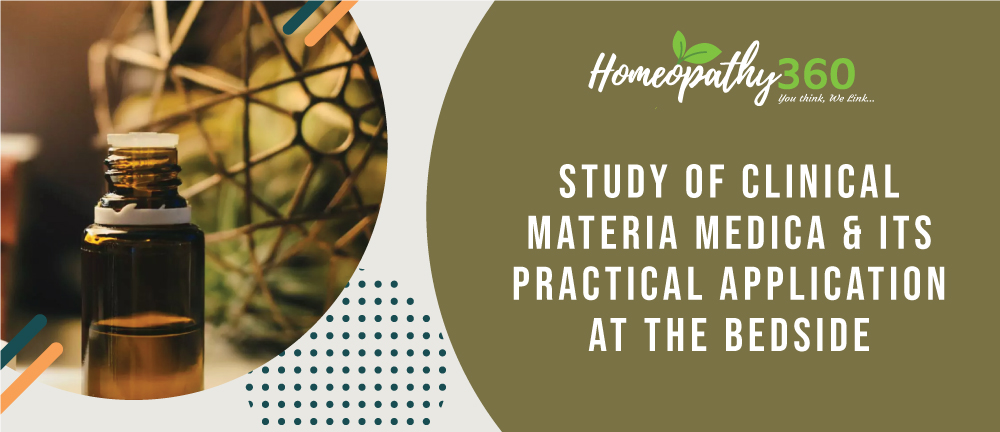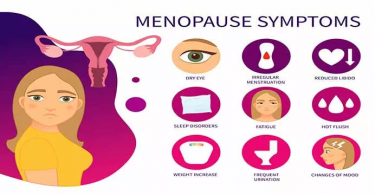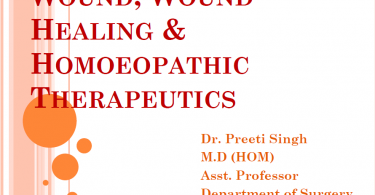
ABSTRACT
Homoeopathic Materia Medica is a record of symptoms produced by a drug on healthy human beings. Ever since the discovery of homoeopathy, it has been presented in various ways by different authors. With increase of the number of proved drugs, a lot of clinical symptoms of many drugs have also been added into the pathogenesis of many drugs. Clinical Materia Medica helps in a quick selection of an indicated remedy on the basis of ‘totality of symptoms’.
KEYWORDS: clinical materia medica, types of homoeopathic materia medica
INTRODUCTION
Hahnemann had perceived that the whole edifice of the old Materia Medica must be rebuilt from the very foundation, as that Materia Medica furnished nothing positive regarding the pathogenetic actions of drugs, but was composed almost entirely of suppositious accounts of the virtues of drugs, principally derived from the empirical employment of these drugs in disease.
He carried out the first drug-proving using Cinchona bark (the famous ‘Peruvian Bark Trial’) and this led Hahnemann to conceive the principle of similars: that like may cure like.
Hahnemann did proving of drugs on healthy as well as sick individuals and proved 100 drugs in all. His first publication (1805) was Fragmenta de viribus medicamentorum positivis. It was written, as its name implies, in latin, and contained pathogeneses of twenty-seven drugs. The Reine Arzneimittellehre, better known by its latin name of Materia Medica Pura, began to be issued, in successive volumes, in 1811 and the first edition was completed in 1821. In 1822, a “second augmented edition” began to appear and ran on in like manner until 1827. In 1830 and 1833 respectively the first and second volumes entered a third edition, which, however, went no farther. Our translation of the work thus contains the medicines of the first two volumes in their third, of the other four in their second revision.1
Hahnemann was the first savant who tested and recorded all such findings in his book “Materia Medica Pura”. He preferred to keep this name because it is the term applied for Materia Medica which has been prepared by testing the pure effects of drugs on human beings and not on the basis of past experiences or conjectures. The provings were conducted on healthy human beings of different ages, both sexes and various constitutions. This Materia Medica Pura contains the true symptoms of drugs and admits of no misinterpretation with changing medical terminology, altered biological conception and new scientific discoveries.
Hahnemann’s third and last collection of pathogeneses constitutes (with the introductory essay) the work entitled Die Chronischen Krankheiten, “Chronic Diseases.” The first edition consisted of three volumes published in 1828, and fourth in 1830. The second and third of these contained fifteen medicines, all new ones, presented enlarged symptom-lists of five which have already appeared in the Materia Medica Pura. The second edition appeared in successive parts between 1835 and 1839. Besides the twenty- two medicines of the first edition it contains twenty five others. Twelve of these had already appeared in the Materia Medica Pura, and the rest (with few exceptions) in the Fragmenta or in Stapf’s journal, the Archiv; but nearly all have large additions.1
Since the discovery of Homoeopathy and proving of symptoms, different authors represent it in different ways. If we look back to the history of Materia Medica, an evolution takes place in presenting Materia Medica by different authors. With the advancement of time, number of proved drugs increased, a lot of clinical symptoms of many drugs are introduced by different Homoeopaths. So many scholars of early and mid-nineteenth century like Dr. Hering, Dr. R. Hughes, Dr. J.T. Kent tried to systematize the writings of Materia Medica symptoms which resulted in different types of materia medica.2
Broadly materia medicas can be classified into two:
- Materia medicas in which symptoms were mentioned in an unmodified form, i.e., directly in the form in which it was obtained from the prover.2
- Materia medicas which contain lectures on proving experience by various authors.
These can be classified further into types:
- Materia medicas in which the authors share the symptoms of medicines but do not give any clinical names to them. Eg. Nash’s Leaders, Homoeopathic Drug Pictures by Tyler, etc.
- Materia medicas in which the authors share the symptoms along with using scientific terminology for them. Eg. Boericke’s Materia Medica, Boger Synoptic Key, etc.
TYPES OF HOMOEOPATHIC MATERIA MEDICA
Homoeopathic Materia Medica is a record and collection of symptoms produced by a drug on healthy human beings. It may be considered as a portrait gallery of diseases, a sort of medical rogue’s gallery by means of which we may identify the thieves who rob us of our health and comfort and bring them to justice.
The homoeopathic Materia Medica is a very fascinating and enchanting and yet a mysterious subject. Its simplicity, its vastness, its apparent similarity of symptoms in different medicines often throw a tremendous challenge to the neophytes.3 It requires careful, diligent, prodigious study, long experience and insight to see order in the bewilderment of such a vast collection of symptoms. Because of complex experiences gathered from time to time and their uniqueness, there is a large number of books on Materia Medica. It ought to happen because every author presents the drugs as he understands them. Every teacher and student of Materia Medica sees the same facts in the drugs, but they evaluate differently. One emphasizes on certain aspect and which may be completely neglected or ignored by another person. We possess a vast literature.
Different types of Materia Medica have been developed in homoeopathy. According to the mode of presentation, we find the following types of Materia Medica:
- Materia Medica of proving:
- Materia Medica Pura by Hahnemann.
- Condensed Materia Medica by Hering.
- Materia Medica of physiological action: These types of books deal with the kind of action of each drug. Here attempt is made to describe the central theme of physiological action or actions of each of them.2
- A Textbook of Materia Medica and Therapeutics by Cowperthweite.
- A Manual of Pharmacodynamics by Hughes.
- Physiological Materia Medica byBurt.
- Characteristic Materia Medica by Dasgupta.
- Clinical Materia Medica: In this type of books, discussion is emphasized on therapeutic aspect with other symptoms.2
- A Clinical Materia Medica by Farrington.
- A Dictionary of Practical Materia Medica by Clarke.
- Pocket Manual of Homoeopathic Materia Medica with Repertory by W. Boericke.
- Special Pathology and Therapeutic Hints by Raue.
- Therapeutic type of Materia Medica: Here the drugs are studied under the headings of different diseases. Eg: Drugs producing pain in different joints are described under arthritis.2
- Homoeopathic Therapeutics by Lilienthal.
- Practical Homoeopathic Therapeutics by Dewey.
- Schematic (anatomical) Materia Medica:
- Materia Medica Pura by Hahnemann.
- The Guiding Symptoms of our Materia Medica by Hering.
- Encyclopaedia of Pure Materia Medica by T.F. Allen.
- A Dictionary of Practical Materia Medica by Clarke.
- Textbook of Materia Medica by Lippe.
- Handbook of Materia Medica and Homoeopathic Therapeutics by T.F. Allen.
- Key-note Materia Medica: They attach special importance to peculiar rare and striking symptoms. It was introduced by Guernsey. Hahnemann, Lippe told it as characteristic symptoms.2 They are:
- Key-notes of Leading Remedies by H.C. Allen.
- A Primer of Materia Medica by T.F. Allen.
- Synoptic Key toMateria Medica by Boger.
- Characteristic Materia Medica by Burt.
- Key-notes and red line symptoms of the Materia Medica by Lippe.
- Comparative Materia Medica: In this type of Materia Medica, drugs having similar pathogenesis are compared with their differentiating points.2
- The Comparative Materia Medica by Farrington.
- Comparative Materia Medica by Gross.
- Leaders in Homoeopathic Therapeutics by Nash.
- Picture type Materia Medica: Here the pathogenesis of drug is presented in a comprehensive manner so that an individual picture of a drug comes out.2
- Homoeopathic Drug Pictures by M.L. Tyler
- Lectures on Materia Medica with New Remedies by J.T. Kent
- Homoeopathic Materia Medica of Graphical Drug Pictures by Pulford.
- Materia Medica of Pharmacodynamic types:
- The new comprehensive system of Materia Medica & Therapeutics by Dr. Hempel
- Lectures on Materia Medica– Carol Dunham
- A manual of Pharmacodynamics by R. Hughes
A NOTE ON “CLINICAL MATERIA MEDICA”
The Clinical School of Philosophy
The clinical school of philosophy has among its patrons, homoeopathic luminaries as E. A. Farrington, J. C. Burnett, W. E. Boericke, J. H. Clarke and C. M. Boger who had a clinically oriented prescription.4
In this method, the symptoms are classified as basic and diagnostic. The application of this principle operates at two levels4:
- The medicines which are not overtly indicated for a particular diagnostic condition are tentatively ruled out from consideration in prescription.4
- The diagnostic criteria are reckoned as bench marks. The symptoms which can be equated with the result of a pathogenetic process, represents the effects of the pathogenesis.4
The symptoms which are actively attributable to the pathogenesis, i.e., those relating to the aetiology, sustenance or modification of the disease phenomenon in the patient, assume a greater significance.4
In the books based on Clinical Materia Medica, discussion is emphasized on therapeutic aspect with other symptoms.
MERITS OF CLINICAL MATERIA MEDICA
- A quick selection of a drug can be made as the medicines are compared on its clinical aspect.2
- The clinical suggestions & the therapeutics indices of this type of materia medica, aid the beginner to reach the indicated remedy.
DEMERITS OF CLINICAL MATERIA MEDICA
Complete picture of the drug cannot be compared on its clinical aspect.2
A NOTE ON FEW CLINICAL MATERIA MEDICAS
- A Clinical Materia Medica by Farrington– The genius of each drug is given along with the relationship which drugs bear to one another. The remedies are arranged in three grand divisions, according to the kingdom of nature from which they are derived, viz5.:
- Remedies derived from the animal kingdom
- Remedies derived from the vegetable kingdom
- Remedies derived from the mineral kingdom
There is also a fourth class of remedies, the nosodes or disease products.
- A Dictionary of Practical Materia Medica by Clarke– Clarke’s Dictionary gives useful information on almost 1000 homoeopathic remedies. Each remedy is described as to source, description, clinical application, characteristics, relations, and the symptoms themselves.6
- Boericke’s Homoeopathic Materia Medica and Repertory– The book contains the well-known verified characteristic symptoms of all our medicines besides other less important symptoms aiding the selection of the curative remedy. The author has tried to give a succinct resume of the symptomatology of every medicine used in Homœopathy, including also clinical suggestions of many drugs so far not yet based on provings, thus offering the opportunity to experiment with these and by future provings discover their distinctive use and so enlarging our armamentarium. He has included nosological terms in the symptomatology and Therapeutic Index, as this is a practical handbook for every-day service, and any aid for finding the curative remedy ought to be utilized. About the dosage he says that it is, of course, suggestive only; more often to be wholly disregarded. He has followed the lines of the earlier Homœopathists in this regard, and given what was then considered the usual range of potency, to which he has added his own experience and that of many observing practitioners.7
- Special pathology and therapeutic hints by Raue– Pathological terms are given with meanings and explanations and then followed by Therapeutic hints in which all medicines concerning it are arranged in alphabetical order with indications and references in some medicines. Therapeutic hints are collected from all sorts of observations with low, middle high and highest potencies. Old terminologies which were used in our old Homoeopathic text books by our pioneers are mentioned with meanings and explanations and it must be remembered that this book was written at a time when Pathology was not developed as the modern times.8
CONCLUSION
We can say that Clinical Materia Medica helps in a quick selection of an indicated remedy, after comparing the medicines on the clinical aspect, at the bedside. But it is also worth saying that since in this type of materia medica, a complete picture of the drug cannot be compared on its clinical aspect, so the prescription must be done with caution on the basis of a carefully constructed ‘totality of symptoms’.
REFERENCES
REFERENCES
- Hughes Richard, “The Knowledge of the Physician, A Course of Lectures”, reprint edition 2000, Pg. 68-90, 259-285; B. Jain Publishers (P) Ltd., New Delhi
- Ali M. Homeobook. [Online].; 2012 [cited 2022 January 29. Available from: https://www.homeobook.com/types-of-homoeopathic-materia-medica/
- International Study & Research Centre on Homoeopathy. 2012. Role of Repertory in Practical Utility of Materia Medica. Accessed 22 January 2022. Available from: https://www.thehomoeopathy.com/uploads/publications/publication_1328621200.pdf
- Ali M. Homeobook. [Online].; 2012 [cited 2022 January 29. Available from: https://www.homeobook.com/boericks-homoeopathic-materia-medica-and-repertory-review/
- Farrington EA. Lectures on Clinical Materia Medica. New Delhi: B. Jain Publishers Pvt. Ltd.; 2003.
- Clarke JH. A Dictionary of Practical Materia Medica. 1st ed. New Delhi: B. Jain Publishers Pvt. Ltd.; 2005.
- Boericke W. New Manual of Homoeopathic Materia Medica and Repertory. Augmented edition based on ninth edition. New Delhi: B. Jain Publishers Pvt. Ltd.; 2006.
- Ali M. Homeobook. [Online].; 2012 [cited 2022 January 29. Available from: https://www.homeobook.com/special-pathology-therapeutic-hints-by-c-g-raue/
About the Author:
Dr Manpreet Kaur
BHMS, MD(Hom.), PhD (Hom.), DNHE, Fellowship in Palliative Care
Associate Professor,
Department of Pathology
JR Kisan Homoeopathic Medical College and Hospital,
Homoeopathic Physician and Consultant,
Dr Manpreet’s Homoeo Clinic,
D-49 Sham Nagar, Main Khyala Road (Sheetla Mata Mandir Road)
New Delhi-110018
Member of the Editorial Board of E-journal of NAPCAIM





